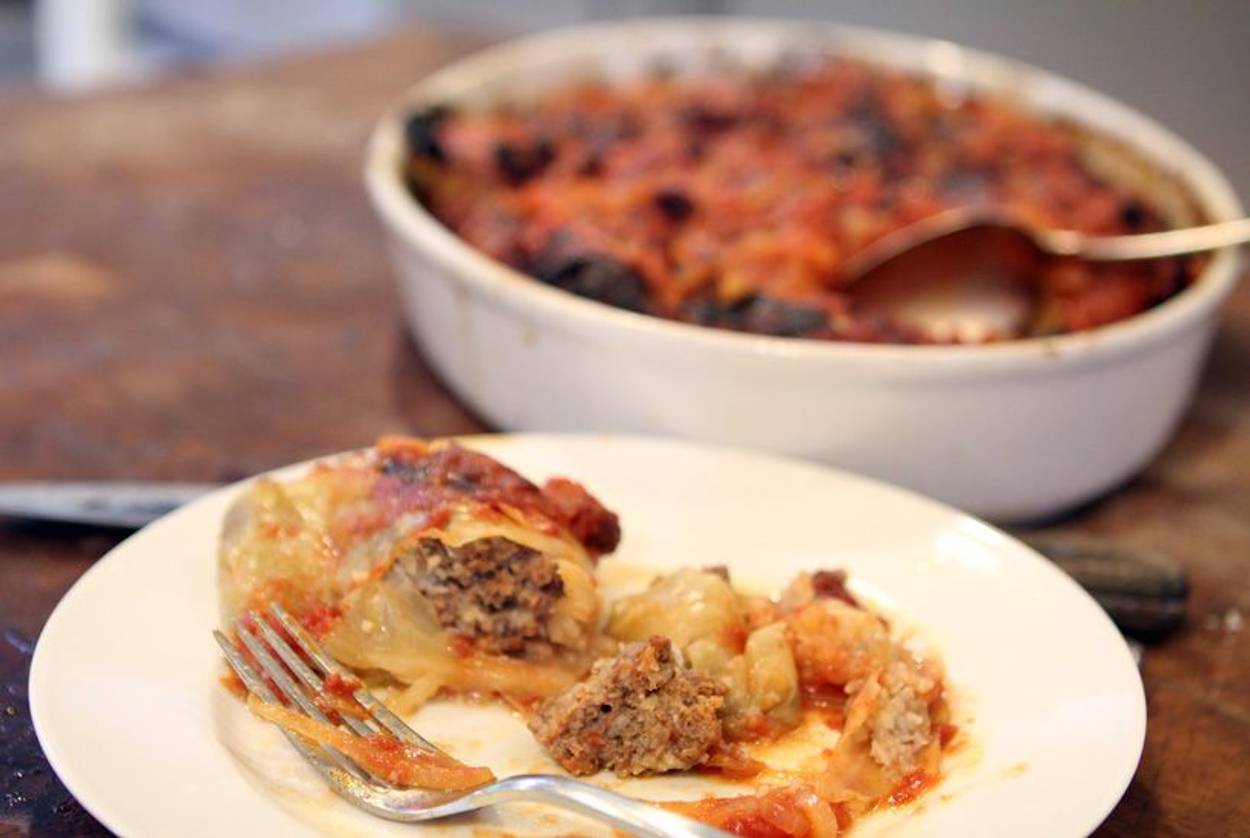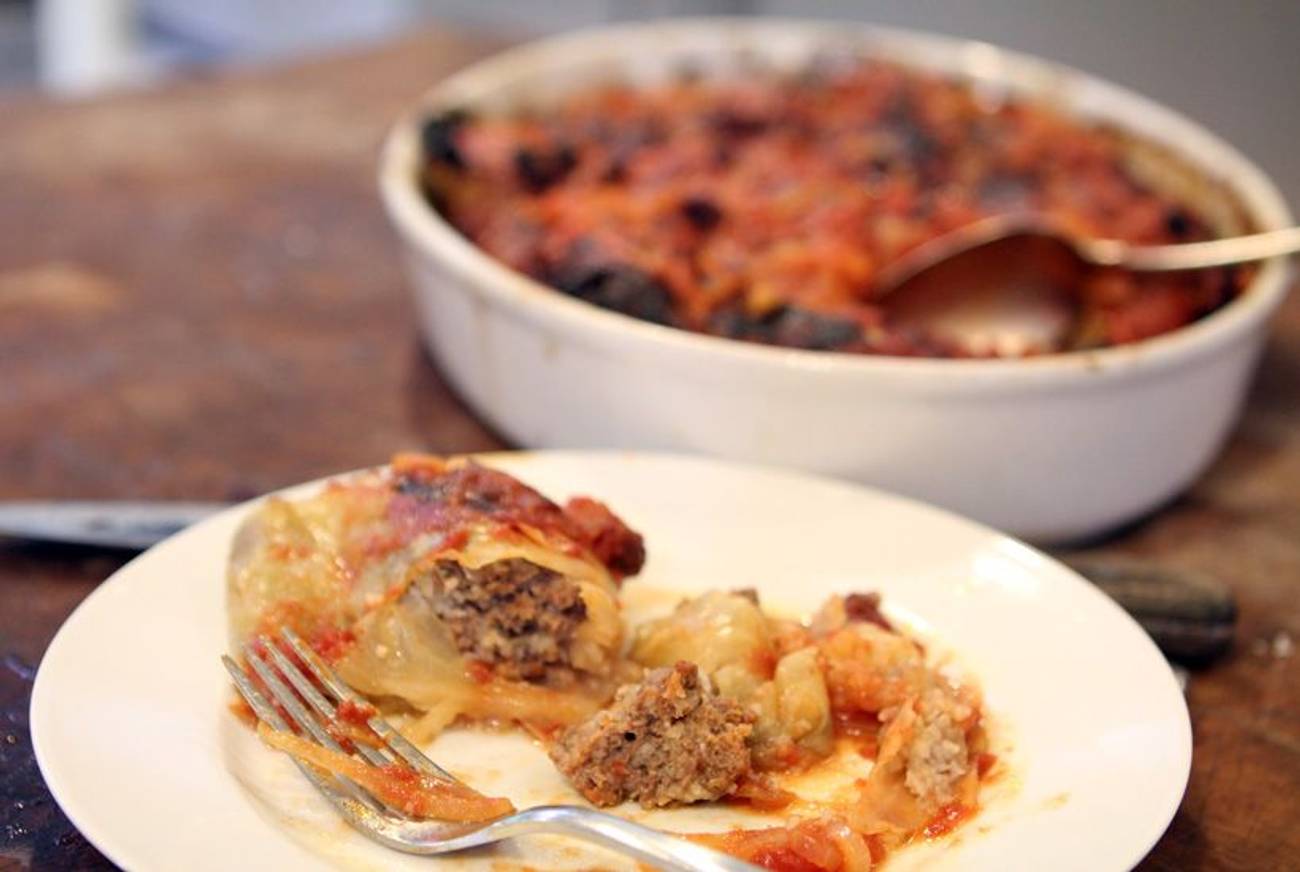The Ultimate Stuffed Cabbage—a Perfect One-Pot Dinner for Sukkot
Video: This American twist on a traditional Jewish recipe will help get your new year off to a sweet-and-sour start




Stuffed vegetable dishes are traditionally served on Sukkot—often in make-ahead, one-pot casseroles that can be served outside in the sukkah. For me, stuffed cabbage is the ultimate comfort food. Slightly sweet and slightly sour, it has been a Jewish treat since ancient times when Jews from Baghdad started stuffing Swiss chard and beet greens with rice, meat, and onions, and cooked them with beets, a bit of tamarind, and some lemon in a dish called mahshi. As Jewish merchants traveled around the world, they brought their recipes along, varying the stuffed vegetables by region. In Lebanon and other parts of the Middle East, they stuffed grape leaves, carrots, beets, onions, even figs; in Turkey they used zucchini, tomatoes, and peppers; in Hungary and Eastern Europe, they stuffed cabbage. Some, like Hungarians, disliked the sweet and sour taste and made theirs with cabbage and sauerkraut.
This recipe for stuffed cabbage is a distinctly American variation with ketchup, tomatoes, brown sugar, and lemon juice. It is also American to freeze the cabbage and then defrost it, a trick I learned long ago that makes this dish a snap to prepare. And, like many good Jewish dishes, it tastes better the next day.
Joan Nathan is Tablet Magazine’s food columnist and the author of 10 cookbooks including King Solomon’s Table: a Culinary Exploration of Jewish Cooking from Around the World.